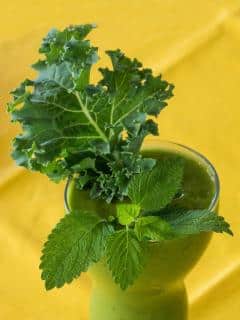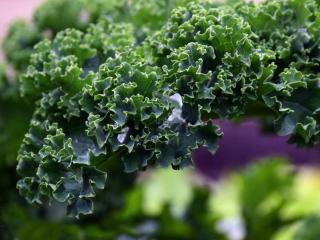Kale (Brassica oleracea var. sabellica) is a leaf vegetable that is very hardy, grown for its wide, jagged leaves.
Stock full of nutrients, vitamins and mineral as well as fiber, kale (also called leaf cabbage) is an excellent antioxidant.
Health benefits of cabbage
Since long ago has cabbage, and all plants of the Brassicaceae family, been recognized to be very effective in treating lung and chest disorders. Boiled cabbage was also used to soothe inflammatory digestive tract diseases, dysentery and ascites connected to liver cirrhosis.
 Today, kale is part of the “top ten” healthy foods: used for weight-loss diets, it is known for its antioxidant properties and is recommended for its high fiber and trace element contents.
Today, kale is part of the “top ten” healthy foods: used for weight-loss diets, it is known for its antioxidant properties and is recommended for its high fiber and trace element contents.
- Kale cabbage is a very good source of vitamin C which protects skin integrity, heals wounds, protects cells from premature ageing due to free radicals, and enhances immune system activity.
- Kale is a good idea in cases of various dyspeptic disorders (heartburn, hiatal hernia, regurgitation, hepatobiliary dyspepsia). It soothes pain due to gastric ulcers, duodenal ulcers, and gastritis.
- Cabbage naturally regulates digestive tract functions.
- Cabbage is a great source of calcium which is crucial for bone health, muscle contraction, regulating of arterial blood pressure, wound-healing and signal transmission in the nervous system.
- With the potassium it delivers, kale reduces risks of cardiovascular diseases.
- With elevated vitamin and mineral contents, cabbage is a life-changer in case of anemia.
- Topical use of raw cabbage helps heal wounds and alleviates rheumatism, headaches, sciatic pain and painful joints.
- A diet of kale ensures quick and substantial weight loss. The “cabbage soup” diet (kale broth, tomato, garlic, onion, bell pepper, carrot, celery and parsley) morning, lunch and dinner must however never last more than a week.
Growing kale for its health benefits
 Kale must be planted in full sun to thrive. It requires cool soil, chalky, rich, well-drained, nitrogen-laden and tilled down deep. Take care that it doesn’t stay in stagnant water.
Kale must be planted in full sun to thrive. It requires cool soil, chalky, rich, well-drained, nitrogen-laden and tilled down deep. Take care that it doesn’t stay in stagnant water.
You’ll have high productivity if you choose to grow your kale in pots (at least 12 inches (30 cm) across).
Check your cabbage often: many small bugs (aphids, flies, weevils, etc.) love them, too. Your leaves would be drilled with holes, lose their colors and eventually die.
Cooking with kale
- Kale is often eaten cooked after blanching, or raw, sliced and added to mixed salads.
- Paired with tomatoes, green bell peppers and celery, kale produces broth that cleanses the body of all its impurities.
- Sauerkraut (resulting from lactofermentation of the leaves) is one of the easiest meals to digest: its acidic nature is perfect for lazy stomachs and the lactic acid acts to disinfect the digestive tract.
- Just like lettuce, kale leaves will stay crisp in the refrigerator if wrapped in paper towels or cloth and stored in a plastic bag or airtight container.
Nutritional content
Since it is a very low-calorie food (25 kcal / 3.5 oz (100 g)), kale is ideal weight loss ally. Even if it already boasts very high vitamin C, B1, B9, and E contents, kale also contains calcium, iron, sulfur, sodium and potassium. It is also diuretic and antioxidant.
Images: Pixabay: Mannasource, Monika Baechler, Ulrike Leone


 Today, kale is part of the “top ten” healthy foods: used for weight-loss diets, it is known for its antioxidant properties and is recommended for its high fiber and trace element contents.
Today, kale is part of the “top ten” healthy foods: used for weight-loss diets, it is known for its antioxidant properties and is recommended for its high fiber and trace element contents. Kale must be planted in full sun to thrive. It requires cool soil, chalky, rich, well-drained, nitrogen-laden and tilled down deep. Take care that it doesn’t stay in stagnant water.
Kale must be planted in full sun to thrive. It requires cool soil, chalky, rich, well-drained, nitrogen-laden and tilled down deep. Take care that it doesn’t stay in stagnant water.